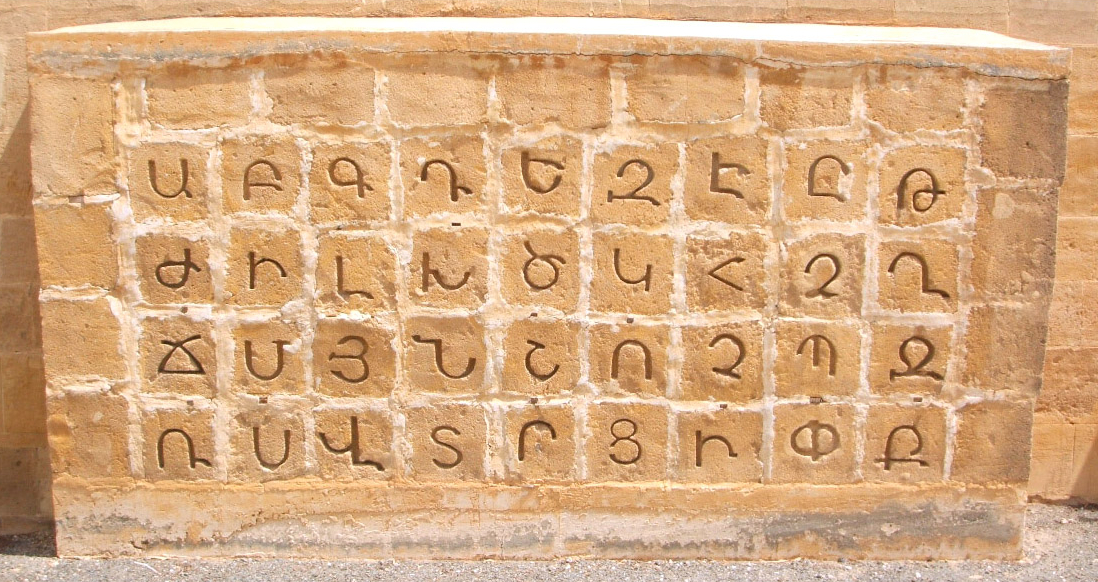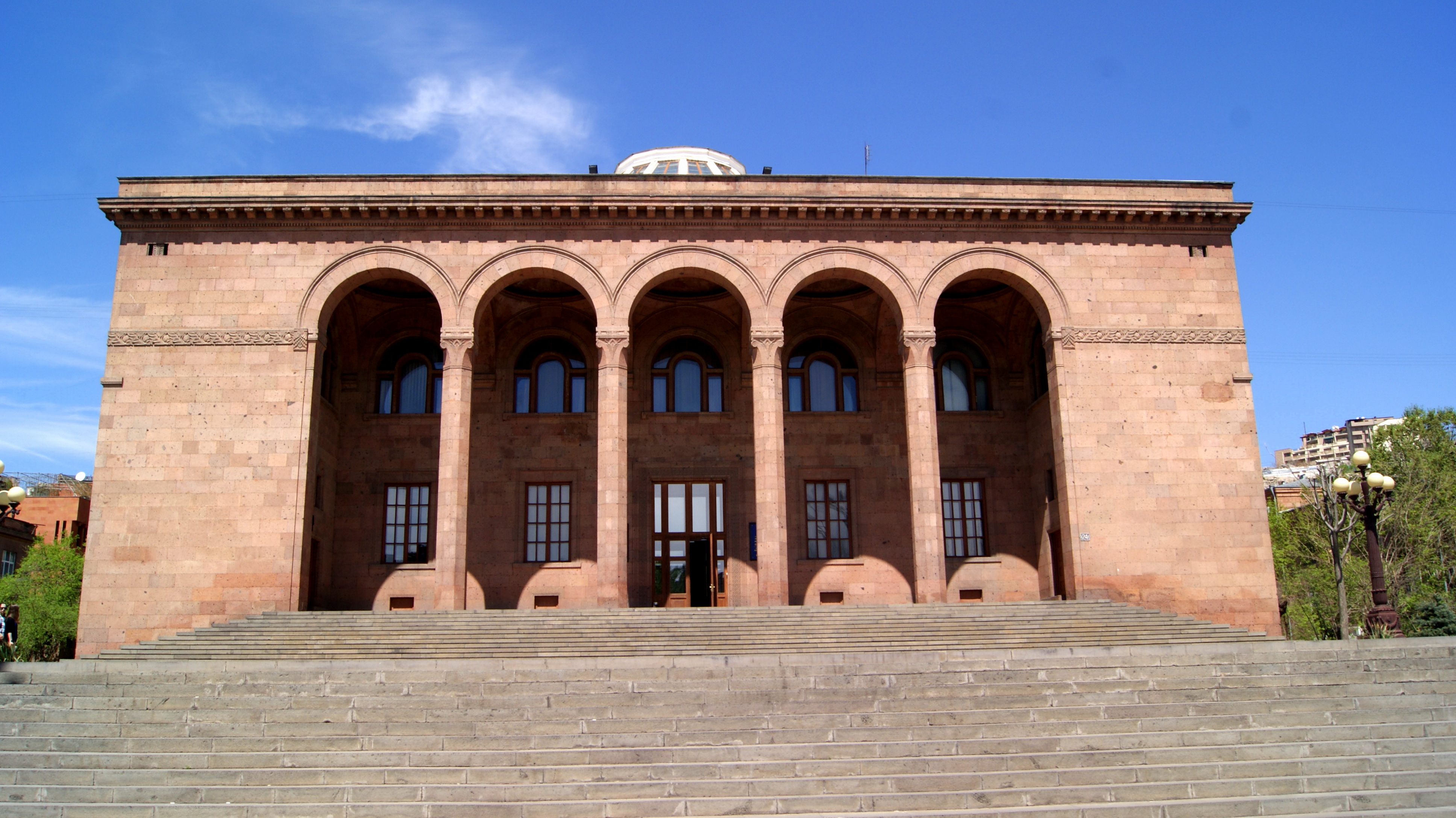|
Persian Armenia
Sasanian Armenia, also known as Persian Armenia and Persarmenia ( hy, Պարսկահայաստան – ''Parskahayastan''), may either refer to the periods in which Armenia ( pal, 𐭠𐭫𐭬𐭭𐭩 – ''Armin'') was under the suzerainty of the Sasanian Empire or specifically to the parts of Armenia under its control such as after the partition of 387 when parts of western Armenia were incorporated into the Eastern Roman Empire while the rest of Armenia came under Sasanian suzerainty but maintained Kingdom of Armenia (antiquity), its existing kingdom until 428. In 428, Armenian nobles petitioned Bahram V to depose Artaxias IV (r. 422);''Introduction to Christian Caucasian History:II: States and Dynasties of the Formative Period'', Cyril Toumanoff, Traditio, Vol. 17, 1961, Fordham University, 6. Bahram V (r. 420–438) abolished the Kingdom of Armenia and appointed Veh Mihr Shapur as ''marzban'' (governor of a frontier province, "margrave") of the country, which marked the ... [...More Info...] [...Related Items...] OR: [Wikipedia] [Google] [Baidu] |
Late Antiquity
Late antiquity is the time of transition from classical antiquity to the Middle Ages, generally spanning the 3rd–7th century in Europe and adjacent areas bordering the Mediterranean Basin. The popularization of this periodization in English has generally been credited to historian Peter Brown (historian), Peter Brown, after the publication of his seminal work ''The World of Late Antiquity (1971), The World of Late Antiquity'' (1971). Precise boundaries for the period are a continuing matter of debate, but Brown proposes a period between the 3rd and 8th centuries AD. Generally, it can be thought of as from the end of the Roman Empire's Crisis of the Third Century (235–284) to the early Muslim conquests (622–750), or as roughly contemporary with the Sasanian Empire (224–651). In the West its end was earlier, with the start of the Early Middle Ages typically placed in the 6th century, or earlier on the edges of the Western Roman Empire. The Roman Empire underwent considerable ... [...More Info...] [...Related Items...] OR: [Wikipedia] [Google] [Baidu] |
Artaxias IV
Artaxias IV or Artashir IV who is also known as Artaxias, Artashes, Artashes IV, Artashir, Ardases, Ardasir and Artases ( hy, Արտաշես, flourished 5th century) was a prince who served as a Sassanid client king of eastern Armenia from 422 until 428. Artaxias IV was the last Arsacid king of Armenia and the last person to hold the crown of the ancient Armenian Kingdom. Family background, early life and rise to the throne Artaxias IV was the son of Vramshapuh who ruled eastern Armenia as a Sassanid vassal from 389 until 417. Artaxias' uncle, Khosrov IV, ruled Armenia before Vramshapuh (and possibly after as well). Modern genealogies depict Artaxias IV as the grandson of Varasdates (Varazdat). Artaxias IV was born about 405, as he was seventeen years old when enthroned. The identity of his mother is unknown. She may have been Vramshapuh's wife or concubine. Artaxias IV was born and raised in Armenia and little is known about his life, prior to his kingship. Artaxias IV was na ... [...More Info...] [...Related Items...] OR: [Wikipedia] [Google] [Baidu] |
Armenian Alphabet
The Armenian alphabet ( hy, Հայոց գրեր, ' or , ') is an alphabetic writing system used to write Armenian. It was developed around 405 AD by Mesrop Mashtots, an Armenian linguist and ecclesiastical leader. The system originally had 36 letters; eventually, three more were adopted. The alphabet was also in wide use in the Ottoman Empire around the 18th and 19th centuries. The Armenian word for "alphabet" is ('), named after the first two letters of the Armenian alphabet: hy, այբ ' and hy, բեն, links=no '. Armenian is written horizontally, left to right. Alphabet *Listen to the pronunciation of the letters in or in . Notes: #Primarily used in classical orthography; after the reform used word-initially and in some compound words. #Except in ով "who" and ովքեր "those (people)" in Eastern Armenian. # Iranian Armenians (who speak a subbranch of Eastern Armenian) pronounce the sound represented by this letter with a retracted tongue body : post-a ... [...More Info...] [...Related Items...] OR: [Wikipedia] [Google] [Baidu] |
Vahan Mamikonian
Vahan Mamikonian ( hy, Վահան Մամիկոնյան) (440/445503/510) was an Armenian nobleman from the Mamikonian family. In 481 he rebelled against the Sasanian Empire that controlled the eastern part of Armenia known as Persian Armenia. He was appointed as ''marzban'' (governor) of Persian Armenia in 485 and remained in that post until his death around 503-510. Background From 387 the kingdom of Armenia was divided into two zones of influence, Byzantine Armenia and Persian Armenia. In 428 the last Arsacid Armenian monarch, Artaxias IV, was deposed by his overlord Bahram V at the request of the Armenian '' nakharars'', thus starting the Marzpanate period in Persian Armenia. Very quickly, the Armenians were disillusioned: in 449, Yazdegerd II ordered the nobility to convert to Zoroastrianism. The Armenians revolted under the leadership of Vardan Mamikonian, but were defeated on 2 June 451 (or May 26) at the battle of Avarayr; most ''nakharars'' who participated in the revol ... [...More Info...] [...Related Items...] OR: [Wikipedia] [Google] [Baidu] |
Sparapet
' ( hy, սպարապետ) was a military title and office in ancient and medieval Armenia. Under the Arsacid dynasty of Armenia, the ' was the supreme commander of the kingdom's armed forces. During the Arsacid period and for some time afterwards, the office was held hereditarily by the senior member of the of the House of Mamikonian. Later in history, the title was held by members of other noble houses, such as the Bagratuni and Pahlavuni dynasties. The title was used in the medieval Armenian Kingdom of Cilicia, where the bearer of the title was also called ' ( hy, գունդստաբլ, label=none), from the Byzantine and Western title of constable. Etymology The word is of Iranian origin, ultimately deriving from Proto-Iranian ''*spādapati-'' (“commander of the army”), which is composed of ''*cwáHdaH'' (“army”) and ''*pati-'' (“lord”). Perikhanyan, A. G. (1993). ''Материалы к этимологическому словарю древнеармянс� ... [...More Info...] [...Related Items...] OR: [Wikipedia] [Google] [Baidu] |
Nakharar
''Nakharar'' ( hy, նախարար ''naxarar'', from Parthian ''naxvadār'' "holder of the primacy""նախարար" in H. Ačaṙean (1926–35), ''Hayerēn Armatakan Baṙaran'' (Yerevan: Yerevan State University), 2nd ed., 1971–79) was a hereditary title of the highest order given to houses of the ancient and medieval Armenian nobility. ''Nakharar'' system Medieval Armenia was divided into large estates, which were the property of an enlarged noble family and were ruled by a member of it, to whom the title of ''nahapet'' "chief of the family" or '' tanuter'' "master of the house" was given. Other members of a ''nakharar'' family in their turn ruled over smaller portions of the family estate. ''Nakharars'' with greater authority were recognized as '' ishkhans'' (princes). This system has often been labelled as feudal for practical purposes; however, there are differences between this system and the feudal system later adopted in Western Europe. The estate as a whole was act ... [...More Info...] [...Related Items...] OR: [Wikipedia] [Google] [Baidu] |
Armenian Academy Of Sciences
The National Academy of Sciences of the Republic of Armenia (NAS RA) ( hy, Հայաստանի Հանրապետության գիտությունների ազգային ակադեմիա, ՀՀ ԳԱԱ, ''Hayastani Hanrapetut’yan gitut’yunneri azgayin akademia'') is the Armenian national academy, functioning as the primary body that conducts research and coordinates activities in the fields of science and social sciences in Armenia. It is a member of the International Science Council. History The Academy of Sciences of the Armenian Soviet Socialist Republic was founded on 10 November 1943, on the basis of the Armenian Branch of the Soviet Academy of Sciences, which was established almost 10 years earlier, in 1935. Among its founders were Joseph Orbeli, Stepan Malkhasyants, Ivan Gevorkian and Victor Ambartsumian; Orbeli became the first president of the academy. Presidents *Joseph Orbeli (1943–1947) * Victor Ambartsumian (1947–1993) *Fadey Sargsyan (1993–2006) * Radik Ma ... [...More Info...] [...Related Items...] OR: [Wikipedia] [Google] [Baidu] |
Soviet Armenian Encyclopedia
The ''Armenian Soviet Encyclopedia'' ( hy, Հայկական սովետական հանրագիտարան, ''Haykakan sovetakan hanragitaran''; ASE) publishing house was established in 1967 as a department of the Institute of History of the Armenian Academy of Sciences under the presidency of Viktor Hambardzumyan (1908–1996), co-edited by Abel Simonyan (1922–1994) and Makich Arzumanyan (1919–1988). In 1988–1999 the editor-in-chief was Konstantin Khudaverdyan (1929–1999) and since 1999 Hovhannes Aivazyan. It produced the ''Soviet Armenian Encyclopedia'' (also rendered ''Armenian Soviet Encyclopedia''; '' hy, Հայկական Սովետական Հանրագիտարան'', ', ''russian: Армя́нская сове́тская энциклопе́дия'', ' ) from 1974–1986. The AE publishing house also edited a children's encyclopedia, ''Who is it? What is it?'' ( hy, italic=yes, Ո՞վ է, Ի՞նչ է) in 4 volumes (1984–87), the ''Russian-Armenian Polytechnical D ... [...More Info...] [...Related Items...] OR: [Wikipedia] [Google] [Baidu] |
Suren Yeremyan
Suren Tigrani Yeremian ( hy, Սուրեն Տիգրանի Երեմյան; russian: Сурен Тигранович Еремян; – 17 December 1992) was a Soviet and Armenian historian and cartographer who specialized in the study of the early formation of the Armenian nation, pre-medieval Armenia, and the Caucasus. He devoted nearly thirty years of his scholarly efforts in reconstructing the '' Ashkharhatsuyts'', a seventh-century atlas commonly attributed to Anania Shirakatsi.See the "Preface" and "Introduction" in Robert Hewsen's ''The Geography of Ananias of Širak: Asxarhacoyc, the Long and the Short Recensions''. Wiesbaden: Dr. Ludwig Reichert, 1992, . Biography Early life and education Yeremian was born into a family of laborers in Tiflis, in 1908 and attended a local Russian school. Presidency of the Armenian Academy of the Sciences, Institute of History. "S. T. Yeremian," ''Patma-Banasirakan Handes'' 135-136 (1992), pp. 255-256. Mahé, Jean-Pierre. "In Memoriam: So ... [...More Info...] [...Related Items...] OR: [Wikipedia] [Google] [Baidu] |
Arminiya
Arminiya, also known as the Ostikanate of Arminiya ( hy, Արմինիա ոստիկանություն, ''Arminia vostikanut'yun'') or the Emirate of Armenia ( ar, إمارة أرمينيا, ''imārat Arminiya''), was a political and geographic designation given by the Muslim Arabs to the lands of Greater Armenia, Caucasian Iberia, and Caucasian Albania, following their conquest of these regions in the 7th century. Though the caliphs initially permitted an Armenian prince to represent the province of ''Arminiya'' in exchange for tribute and the Armenians' loyalty during times of war, Caliph Abd al-Malik ibn Marwan introduced direct Arab rule of the region, headed by an '' ostikan'' with his capital in Dvin. According to the historian Stephen H. Rapp in the third edition of the ''Encyclopaedia of Islam'': History Early period: the Arab conquest of Armenia The details of the early conquest of Armenia by the Arabs are uncertain, as the various Arabic sources conflict with the ... [...More Info...] [...Related Items...] OR: [Wikipedia] [Google] [Baidu] |
Arab Conquest Of Armenia
The Muslim conquest of parts of Armenia and Anatolia was a part of the Muslim conquests after the death of the Islamic prophet Muhammad in 632 CE. Persarmenia had fallen to the Arab Rashidun Caliphate by 645 CE. Byzantine Armenia was already conquered in 638–639. Background: Islamic expansion After Muhammad's death in 632, his successors started a military campaign in order to increase the territory of the new Caliphate. During the Muslim conquests, the Arabs conquered most of the Middle East. Sources The details of the early conquest of Armenia by the Arabs are uncertain, as the various Arabic, Greek, and Armenian sources contradict each other. The main sources for the period are the eyewitness account of the Armenian bishop Sebeos, along with the history of the 8th-century Armenian priest Łewond. The Arabic historians al-Tabari and Ya'qubi also provide information about the period, but the main source is the 9th-century scholar al-Baladhuri, who, unusually for a ... [...More Info...] [...Related Items...] OR: [Wikipedia] [Google] [Baidu] |
.jpg)





.png)